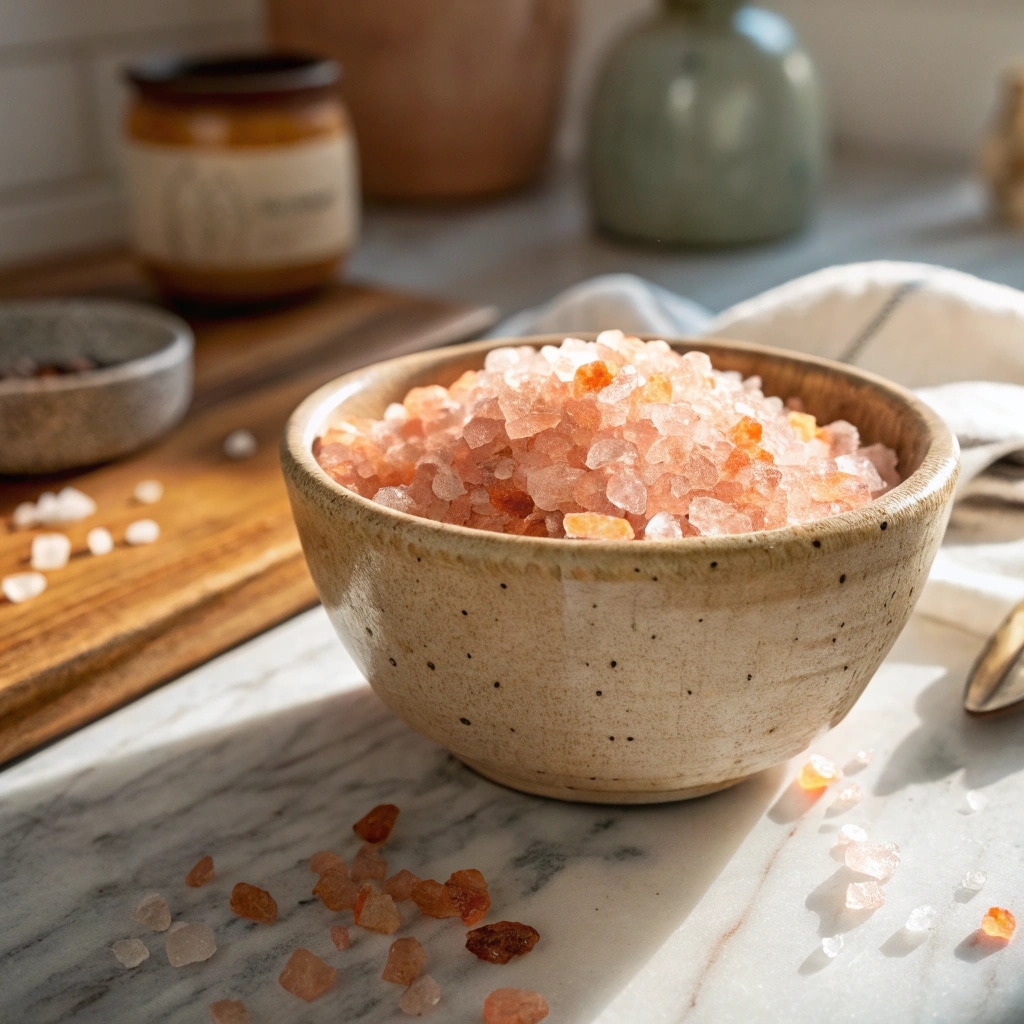Himalayan pink salt is more than just a pretty addition to your spice rack. Mined from ancient sea beds near the Himalayas, it stands out for its rosy color and subtle mineral flavor. Unlike highly processed table salt, this natural salt retains trace minerals like magnesium and potassium. Many home cooks and wellness fans now prefer it not just for taste, but for what they believe are real health benefits. In this article, we’ll look at where it comes from, what makes it unique, and whether it truly deserves its healthy reputation. And if you’re already curious, wait till you see what this Brazilian Mounjaro Recipe for Weight Loss Or Pink Salt Trick Recipe can do for flavor layering.
Table of Contents
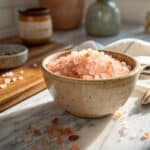
Himalayan Pink Salt Benefits You Should Know Today
- Total Time: 3 minutes
- Yield: 1 glass 1x
Description
A refreshing morning drink made with Himalayan pink salt, lemon, and warm water to gently hydrate and support electrolyte balance.
Ingredients
1 cup warm filtered water ¼ teaspoon Himalayan pink salt Juice from ½ fresh lemon Optional: pinch of cayenne or 1 tsp raw honey
Instructions
1. Warm the water just enough to dissolve the salt. Stir in the Himalayan pink salt until fully dissolved. Add the lemon juice and any optional ingredients. Drink slowly on an empty stomach in the morning.
Notes
Not a medical treatment. Use this drink to gently hydrate and start your day.
- Prep Time: 3 minutes
- Cook Time: 0 minutes
- Category: Drinks
- Method: No-Cook
- Cuisine: Wellness
Nutrition
- Serving Size: 1 glass
- Calories: 4
- Sugar: 0g
- Sodium: 500mg
- Fat: 0g
- Saturated Fat: 0g
- Unsaturated Fat: 0g
- Trans Fat: 0g
- Carbohydrates: 1g
- Fiber: 0g
- Protein: 0g
- Cholesterol: 0mg
The Story Behind My Himalayan Pink Salt Obsession
Why This Salt Lives on My Countertop
Growing up in Vermont, we never had pink salt in the house. It was always the classic iodized shaker or the big tub of sea salt for Dad’s BBQ rub. But a few years ago, a friend handed me a small jar of Himalayan pink salt as a gift. I didn’t think much of it until I used it on roasted carrots. The flavor popped—bright, earthy, not overly salty—and suddenly, I was curious. What was this salt and why did it taste better?
These days in my Asheville kitchen, pink salt has earned a permanent spot by the stove. I reach for it to finish a salad, stir into soup, or even blend into my lavender latte (yes, really—try it in this lavender latte recipe). It adds more than just flavor. There’s a subtle mineral depth that plain table salt just doesn’t deliver.
Himalayan Pink Salt vs Table Salt: Not Just About Color
When I first switched, I assumed the pink hue was just for looks. But it turns out that color means something—it reflects trace minerals like potassium, magnesium, and calcium. Table salt, in contrast, is highly refined and often contains anti-caking agents. Pink salt? It’s hand-mined, sun-dried, and minimally processed. That means you’re getting more than sodium—you’re also getting little hits of nutrients.
It’s not a miracle cure, and we’ll get into what the science says, but I do feel better using something more natural.
The Nutritional Edge And ingredients of Pink Himalayan Salt
What’s Really Inside Pink Salt
When you first look at it, pink Himalayan salt seems like fancy seasoning. But what sets it apart are the trace minerals it contains—over 80 in total. These include small amounts of potassium, magnesium, iron, and calcium. While the amounts are minimal, some people believe that consuming salt in this raw, unprocessed form offers better balance than refined table salt.
One thing to remember is that pink Himalayan salt doesn’t usually contain added iodine, unlike table salt. Iodine is essential for thyroid health, so if this salt is your only source, consider other dietary sources like seaweed or dairy. Still, many prefer it for its clean taste and mineral content, especially in drinks or raw recipes like this dense bean salad that pairs well with its mild, earthy bite.
Mineral Boost Morning Salt Water Recipe
One of the simplest ways to enjoy the benefits of Himalayan pink salt is through a daily morning mineral drink. It’s hydrating, helps wake up your system gently, and is said to support digestion and electrolyte balance.
Here’s how to make it:
Ingredients:
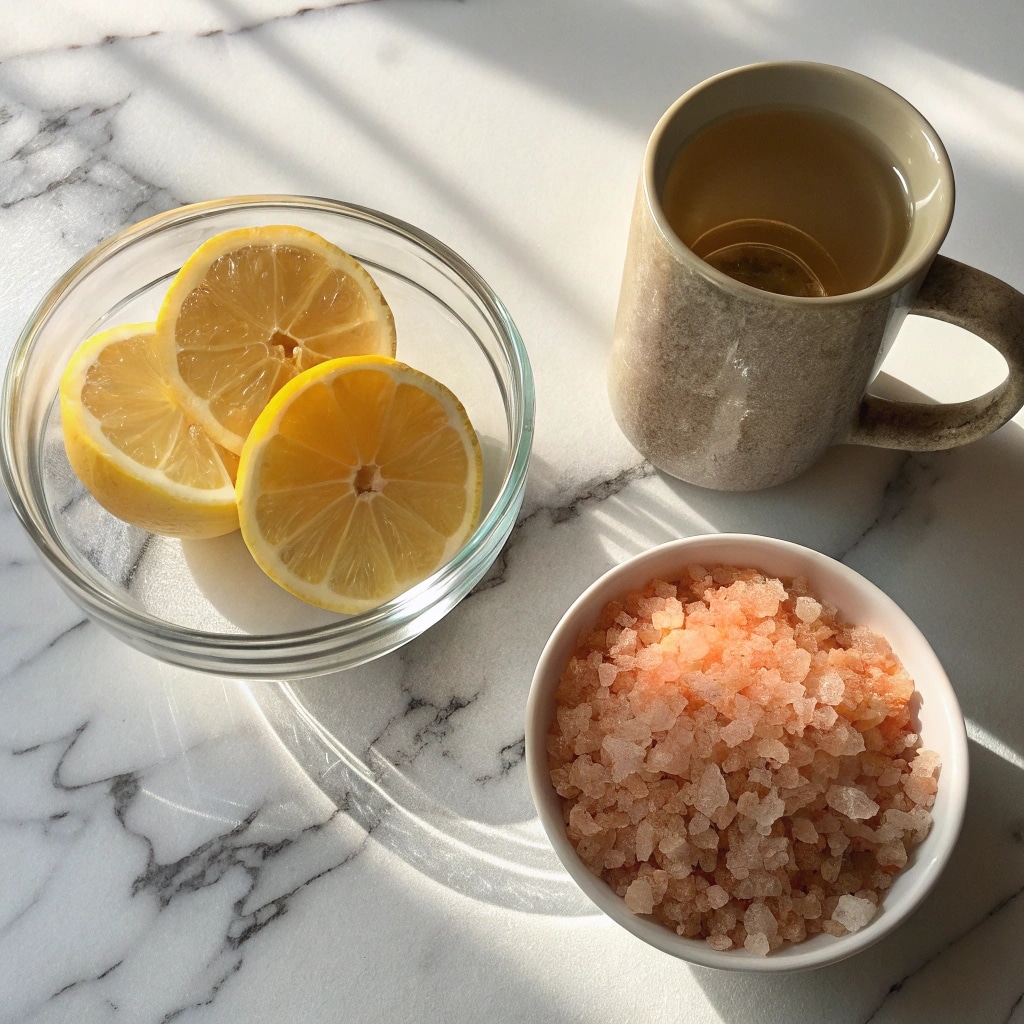
- 1 cup warm filtered water
- ¼ teaspoon Himalayan pink salt
- Juice from ½ fresh lemon
- Optional: a pinch of cayenne or 1 teaspoon raw honey
Instructions:
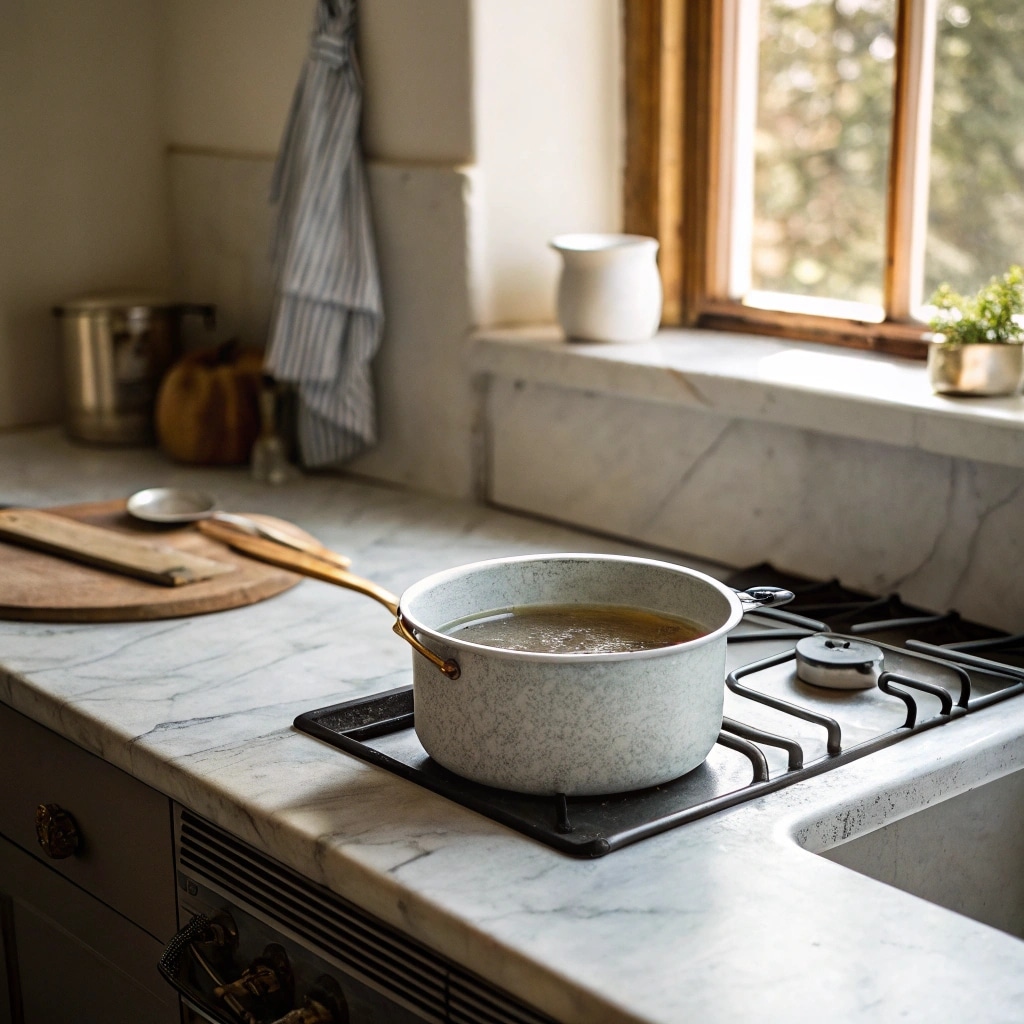
- Warm your water just enough to dissolve the salt—not boiling.
- Stir in the Himalayan pink salt until it’s fully dissolved.
- Squeeze in the lemon juice and add any optional ingredients.
- Drink slowly on an empty stomach in the morning.

It’s not meant to replace breakfast or any medical advice, but I’ve found it helps me feel more alert and balanced—especially after a salty or heavy dinner the night before.
This simple recipe complements other detox-friendly meals like my microgreens salad or a light smoothie. Try it for a week and see how your energy shifts.
Real Benefits or Just Hype?
What the Science Really Says About Himalayan Pink Salt
There’s been a lot of buzz around Himalayan pink salt, with claims ranging from detoxification to improved circulation and balanced pH levels. But how much of this is supported by science?
The truth is, Himalayan pink salt does contain trace minerals like potassium, magnesium, and calcium—minerals that are stripped from regular table salt. These minerals are present in small amounts, yet they contribute to the salt’s distinctive pink hue and slightly more complex flavor. While it won’t cure disease or drastically alter your health, using pink Himalayan salt as part of your daily cooking can be a cleaner, less processed alternative.
One area where pink Himalayan salt can shine is in hydration. Mixed into warm lemon water, it may support electrolyte balance, especially after exercise or on hot days. It’s a small habit that, when paired with healthy meals like my green tea refresher or dense bean salad, helps you feel more refreshed and balanced.
How I Use Himalayan Pink Salt in Real Life
One of my favorite switches has been using Himalayan pink salt in salads and cold dishes where salt doesn’t get masked by heat. I remember trying it first in a cucumber-based pasta salad and being amazed at how it brought out flavor without overpowering the rest of the ingredients.
Now, I keep a small jar of pink Himalayan salt on my prep counter for finishing dishes. I sprinkle it on my dill pickle pasta salad and even add a pinch to cold drinks. It’s become more than just a seasoning—it’s a signature part of how I cook.
So is it a miracle? No. But compared to overly refined table salt, Himalayan pink salt is a natural, flavorful, and mineral-rich alternative that’s easy to love.
Everyday Uses of Himalayan Pink Salt You’ll Actually Try
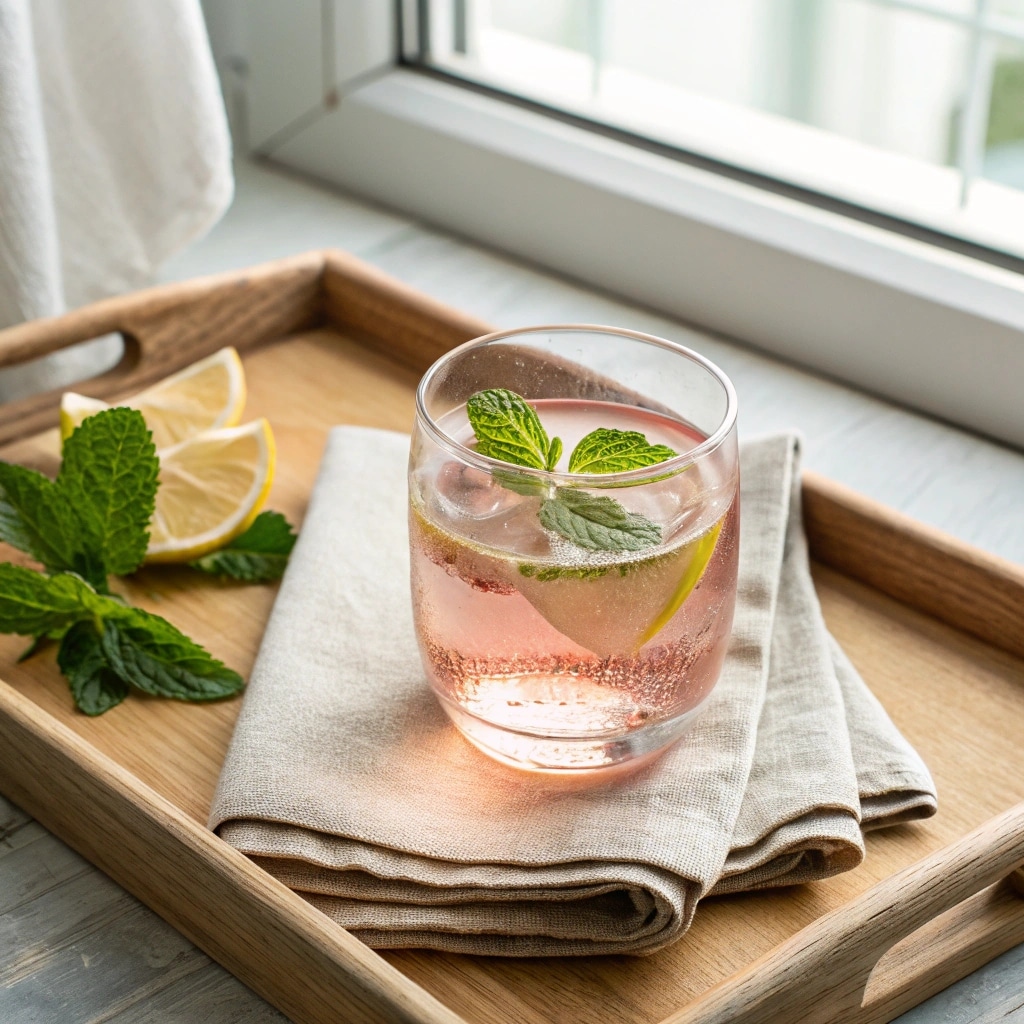
Simple Ways to Use Himalayan Pink Salt in Your Kitchen
One of the easiest ways to enjoy Himalayan pink salt is in your daily cooking. Whether you’re seasoning roasted vegetables, grilling meat, or finishing off a bright citrus salad, this salt adds a subtle depth you just don’t get from processed table salt.
In my kitchen, I often swap it into recipes that call for sea salt or kosher salt. Try using it when boiling pasta water or tossing with roasted sweet potatoes. And if you’re looking for something bold and comforting, I highly recommend the onion boil recipe—it’s warm, soothing, and perfect with a pinch of pink Himalayan salt stirred in just before serving.
Another favorite? A dusting on scrambled eggs with fresh herbs. It’s the small details that elevate your meal—and with Himalayan pink salt, you’re getting clean flavor plus trace minerals.
Beyond Food: Other Uses for Pink Himalayan Salt
Himalayan pink salt isn’t just for seasoning. Thanks to its mineral content, many people use it for wellness purposes, like in homemade bath soaks or salt scrubs. Add a handful to your next warm bath to help ease sore muscles and refresh tired skin.
You can also make a simple DIY salt scrub by mixing fine-grain pink salt with coconut oil and a few drops of essential oil. It’s a natural, effective exfoliator—and I’ve even used it before cooking dinner, especially if I’ve had a long day in the garden.
Some even use pink Himalayan salt in air-purifying lamps or for nasal rinses, though those uses are more anecdotal. Still, it’s fascinating to see how versatile this mineral is.
Whether you’re using it in your recipes or your self-care routine, Himalayan pink salt offers more than just flavor—it becomes part of your rhythm and daily rituals. And that’s what makes it so special.
Frequently Asked Questions About Himalayan Pink Salt
Is pink Himalayan salt good for you?
Yes, pink Himalayan salt can be a good option when used in moderation. It’s less processed than table salt and contains small amounts of minerals like potassium and magnesium. While the amounts are minor, many people prefer it for its clean taste and natural source.
Is Himalayan pink rock salt good for you?
Himalayan pink rock salt is simply another term for the same mineral-rich salt. Because it’s naturally harvested and not bleached or chemically treated, many consider it a better alternative to refined table salt. It’s especially popular among those seeking natural wellness options.
Where does Himalayan pink salt come from?
Himalayan pink salt is mined from ancient sea beds in the Punjab region of Pakistan, near the Himalayan mountains. These salt deposits are believed to be over 250 million years old, making this one of the oldest and purest sources of natural salt on Earth.
Is pink Himalayan salt healthy?
While not a miracle cure, pink Himalayan salt is considered a healthier choice compared to heavily processed salts. It contains trace minerals and lacks additives like anti-caking agents. However, it still contains sodium, so it should be consumed in appropriate amounts.
Does Himalayan pink salt have iodine?
Naturally, Himalayan pink salt contains only very small, trace amounts of iodine. It is not a reliable source of iodine for supporting thyroid health. If you’re relying solely on this salt, make sure to include other iodine-rich foods in your diet like dairy, eggs, or seaweed.
Conclusion: Should You Switch to Himalayan Pink Salt?
If you’re looking for a natural salt that adds subtle flavor and trace minerals to your meals, Himalayan pink salt is worth a spot in your kitchen. It’s not a superfood, but it is a cleaner, unprocessed alternative to table salt. From detox drinks to roasted veggies, morning salt water to homemade scrubs, this mineral-rich salt fits easily into everyday life. Just remember—it’s still salt. Enjoy it for the taste, the minerals, and the ritual, but don’t expect miracles. Swap it in gradually, and you might just find your food—and your routine—tastes a little better.
For more check What Is Himalayan Salt?

